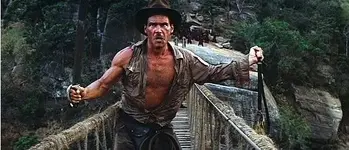Expert Opinion
Not to make excusesfor professor Smith, but to these academics, this kind of a find/artifact is a regular minefield for them. If they make any pronouncement that it is genuine, they then risk attack by the whole of academia, and should the artifact later be found to have been a fake (there are some good ones in circulation, look at the recent "finds" in Israel for examples) the reputation of said professor is ruined for life. Worse, he/she could lose his position (and income) and finding another job would be much more difficult as no academy wants to hire a discredited professor.
I do think he could have been more courteous, but perhaps he was having a bad day, or had just had some close call on an artifact that he thought was genuine and it turned out false. I have run into very much the same thing, and had somewhat better luck in being evasive and vague about where things have been found, but in such cases the professors are usually offended that you have not been honest and forthright about what is known of the item, and will refuse to allow their name or their statements to be used. I think I told you about that incident with a stone plaque or pendant found in Maine, which I did find a professor willing to make a judgement call on it (he stated it was genuine, and either very early Greek or Phoenician, and then asked where it was found) but when he learned that it was found in Maine, wrote a pretty nasty email to me informing me in no uncertain terms that I could not ever use his name in association with that artifact in any way.
There are a few, a VERY few, academics whom are courageous enough to put their career on the line to examine these "OOPARTS" like that apparently Mayan tile. I give these few very high marks for their courage, people like Dr Fell, prof Mark McMenamin, or in other fields equally dangerous to an academic career, professor Jeff Meldrum as examples. Dr Fell is deceased and made a number of mistakes in his interpretations of course, but his work was in a sense ground breaking in even looking at mysterious evidence of ancient travelers, far away from the "accepted" lands where they are expected to be found.
Good luck Mike I hope you are able to find a bona fide Mayan expert to examine the tile and make a statement on it.
BTW Joe you really have a dim view of most treasure hunters don't you? <Cactusjumper wrote>
Many treasure hunters are fairly comfortable with coming to unwarranted conclusions based on a picture or story from a magazine.
While there is no doubt that some treasure hunters DO leap to unwarranted conclusions on some finds (especially treasure symbols/marks) does not the example of our mutual amigo Mike (Gollum) help dispel that impression for you? Mike did not automatically conclude anything, and went to the trouble to seek the opinion(s) of a verified expert in the field. It would be nice if all treasure hunters followed this procedure, but in some cases it is not wise to make a find public information, and how many people would want to be treated brusquely (or curt, as you put it) or worse, for simply asking for a professional opinion? I can see both sides of this coin, and do not know how to make better relations between treasure hunters and academics, some of whom view all treasure hunters as quite literally "the enemy" while little trust exists among treasure hunters for academia.
I will give you a NON-expert opinion Mike; Mayan hieroglyphics are
not my specialty and I can not make a judgement whether that tile is ancient as it appears or a modern fake, but I would say that it
IS MAYAN, and looks to be
a date; if it is genuine as it appears, it is likely that more tiles exist nearby that go with that date. It is a fact that items which almost certainly came from the US (pre-Columbus of course) are found in ancient Mayan sites, and the Mayans like the Aztecs had an active trading network.
I hope you will keep us posted Mike, and almost expect that MORE such finds will be made in that area in the future.
Sorry for the long winded rant.
Roy ~ Oroblanco






